A couple of weeks ago when I was shopping at Whole Foods I looked to purchase organic soy sauce. Believe it or not, there was no organic soy sauce on the shelf! Along with one non-organic soy sauce there were loads of tamari soy sauces and shoyu soy sauces. So what’s the difference? I had to find out!
Soy Sauce
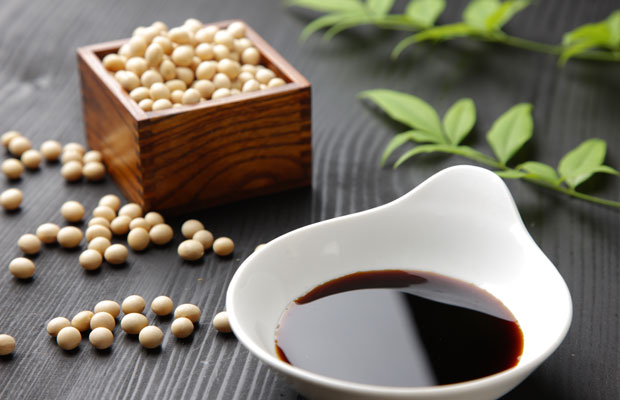
Soy sauce (also called soya sauce) is a condiment made from a fermented paste of boiled soybeans, roasted grain, brine, and Aspergillus oryzae or Aspergillus sojae molds (fungus). After fermentation, the paste is pressed, producing a liquid, which is the soy sauce, and a solid byproduct, which is often used as animal feed.
Soy sauce is a traditional ingredient in East and Southeast Asian cuisines, where it is used in cooking and as a condiment. It originated in China in the 2nd century BCE and spread throughout Asia.
Soy sauce has a distinct yet basic taste of umami, due to naturally occurring free glutamates.
Varieties of soy sauce are salty, earthy, brownish liquids intended to season food while cooking or at the table. Many kinds of soy sauce are made in Japan, Taiwan, China, Korea, Indonesia, Vietnam, Burma and other countries. Variation is usually achieved as the result of different methods and durations of fermentation, different ratios of water, salt, and fermented soy, or through the addition of other ingredients. (source)
Shōyu
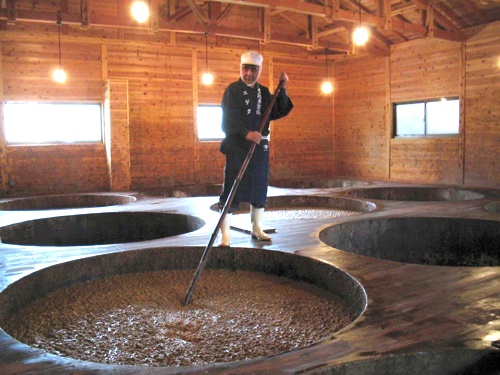
Buddhist monks from China introduced soy sauce into Japan in the 7th century, where it is known as shōyu.
Shōyu is traditionally divided into five main categories (koikuchi, usukuchi, tamari, shiro, and saishikomi) depending on differences in their ingredients and method of production. Most, but not all Japanese soy sauces include wheat as a primary ingredient, which tends to give them a slightly sweeter taste than their Chinese counterparts. They also tend towards an alcoholic sherry-like flavor, sometimes enhanced by the addition of small amounts of alcohol as a natural preservative. The widely varying flavors of these soy sauces are not always interchangeable, some recipes only call for one type or the other, much as a white wine cannot replace a red’s flavor.
Some soy sauces made in the Japanese way or styled after them contain about 50% wheat. (source)
Tamari
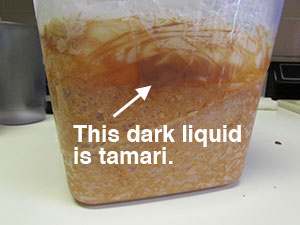
Tamari is one of many types of shōyu made mainly in the Chūbu region of Japan. It is darker in appearance and richer in flavor than koikuchi. It contains little or no wheat. Wheat-free tamari can be used by people with gluten intolerance. It is the “original” Japanese soy sauce, as its recipe is closest to the soy sauce originally introduced to Japan from China.
Technically, this variety is known as miso-damari, as this is the liquid that runs off miso as it matures. The Japanese word tamari is derived from the verb tamaru that signifies “to accumulate”, referring to the fact that tamari was traditionally a liquid byproduct made during the fermentation of miso (type of seasoning). Japan is the leading producer of tamari. (source)
Nutrition
A study by the National University of Singapore showed that Chinese dark soy sauce contains 10 times the antioxidants of red wine, and can help prevent cardiovascular diseases. Soy sauce is rich in lactic acid bacteria and of excellent anti-allergic potential.
Soy sauce does not contain the level of isoflavones associated with other soy products such as tofu or edamame. It can also be very salty, having a salt content of between 14–18%. Low-sodium soy sauces are made, but it is difficult to make soy sauce without using some quantity of salt as an antimicrobial agent.
100ml of soy sauce contains the following nutritional information according to the USDA:
Calories : 60
Fat: 0.1 g
Carbohydrates: 5.57 g
Fibers: 0.8 g
Protein: 10.51 g
Sodium: 6 g
(source)
What to Look for When Buying
Perhaps due to the Whole Foods product standards, many regular soy sauces are not carried because many brands are chemically made instead of naturally fermented. Or perhaps I was shopping on a day after there was a community run on soy sauce!
When purchasing soy sauce be sure to look for organic and “naturally fermented” or “aged.” Also, look at the ingredient list. You don’t want to see flavors, colors, or MSG added like you’ll find on cheap soy sauce take-out packets.
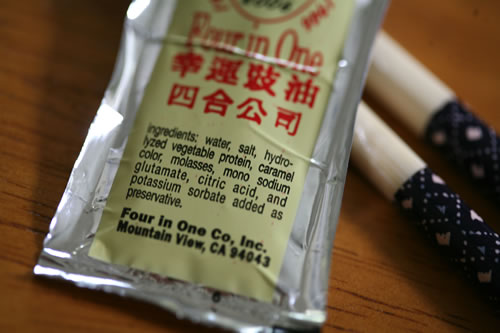
If you can’t find a soy sauce that meets this criteria, venture out and try a shōyu or tamari variety. Ohsawa Organic Nama Shōyu Unpasterurized Soy Sauce has a great flavor and many nutritional benefits. It uses organic whole soybeans, mountain spring water, organic whole wheat, sea salt, and aspergillus oryzae. It is unpasteurized so it’s enzyme- and lactobacillus-rich, and aged four years in cedar kegs. In Japan, “Nama” means “raw” or “unpasteurized.”
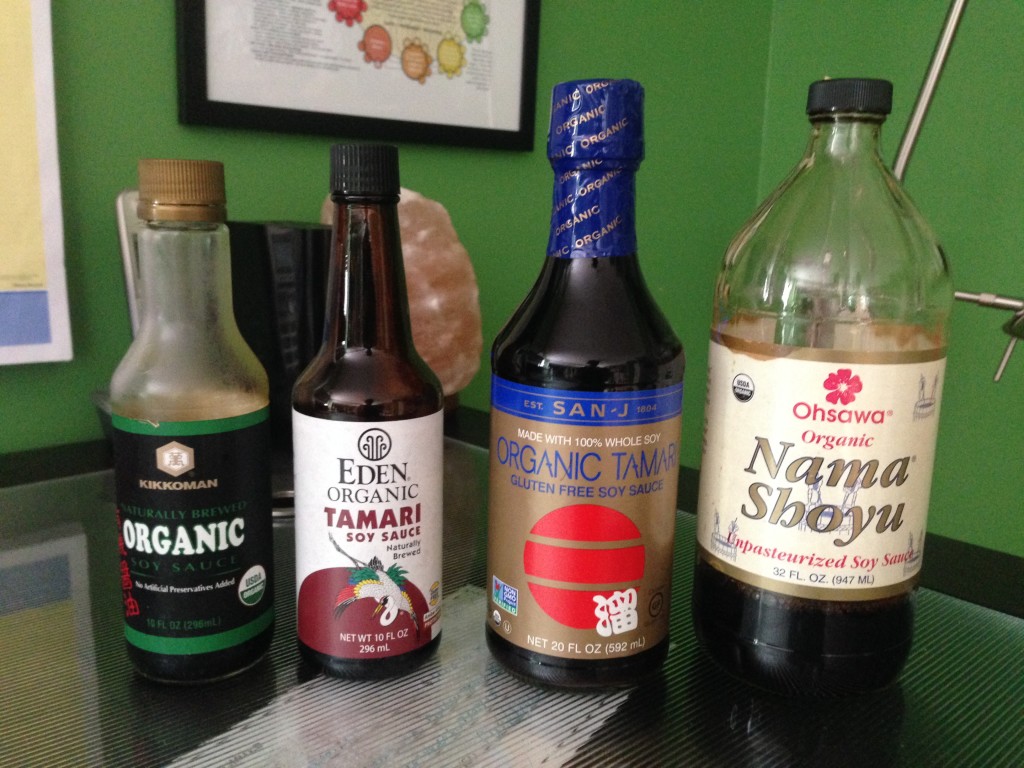
These are the soy sauces currently in my kitchen. Only the Kikkoman Organic Soy Sauce is recommended to be refrigerated. We refrigerate the tamari though it doesn’t say to and the nama shōyu we keep in the pantry. Only the two tamari sauces contain added organic grain alcohol to preserve freshness. The organic soy sauce by Kikkoman I ended up finding at Harris Teeter.
UPDATE: Since writing this post, several readers have recommended Bragg’s Liquid Aminos as a substitute for soy sauce. You can read about the product HERE and learn about amino acids.
Additional Resources

{ 15 comments… read them below or add one }
Many thanks for your research on soy sauce. I never realized there were so many confusing choices. I will get the Ohsawa Organic Nama Shoyu unpasteurized soy sauce. So nice to have someone do all the investigating. Best wishes always.
You’re so welcome Valerie! Enjoy the Nama Shoyu! xo
Vegans will want to avoid using Kikkoman products.
“The animal welfare organization PETA recently discovered that Kikkoman Corporation, a leading soy sauce maker based in Japan, has been “conduction and funding cruel and deadly experiments on animals in order to make health claims about its products.”
http://www.alternet.org/food/kikkoman-conducting-cruel-and-unnecessary-animal-tests?akid=13626.1964611.yGVLTo&rd=1&src=newsletter1045195&t=4
Carla Golden recently posted..Join My PlantPure Nation Pod or One in Your City
It should be noted that Kikkoman has stopped this practice as a result of public feedback.
https://www.kikkoman.com/en/quality/safety/productdevelopment.html
Everyone including vegans can appreciate the change in process.
Thank you for providing this update Jason!
I’m allergic to the tamari but not the soy sauce. I know it’s weird and I was trying to understand. It gives me a heads up. Not traveling to japan.. thank you
Glad this helped!
I prefer coconut aminos over Braggs as coconut aminos have much less sodium and I can add my own salt to a dish without accounting for high sodium soy sauces or Braggs aminos.
Great tip! Thanks for sharing it here Fredda.
Thank you for such an informative article. Btw, I have been using Nama Shoyu for a number of years. On the bottle (although not easily found) it recommends refrigeration after opening. I also use South River Miso Company miso and tamari (which is more delicate and sweeter than the tamari pictured above), both requiring refrigeration too. I recently finished off a bottle of the same organic tamari as yours. I didn’t refrigerate it and only noticed that bottle also recommends refrigeration which I didn’t notice until I only had about 1/4 of a bottle left! I also have been using the Bragg Amino Acids for a long time. It all tastes good to me.
Oh! Thanks for this! I’d better go stick my bottles in the fridge right now. I appreciate you sharing your insights and experiences Bonnie!
I just want to know if the products use sea salt or plain mineral salt (NaCl)
You will need to contact the company directly to get those specifics.
hi,
do u know where i can find a raw vegan organic sake, or wine, sulfite free?
No. I don’t consume alcohol.
Alcohol is Junkfood